Jane Costlow’s photos
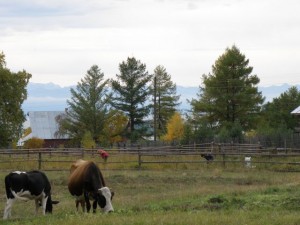 25 Bates students spent almost three weeks in a tiny Siberian village, right on the shores of Lake Baikal. On the day we prepared to leave residents of the village were feverishly digging potatoes, in advance of a winter storm (on September 25) in the forecast. We made it back to Irkutsk, the regional capital, via hydrofoil – despite high seas and snow.
25 Bates students spent almost three weeks in a tiny Siberian village, right on the shores of Lake Baikal. On the day we prepared to leave residents of the village were feverishly digging potatoes, in advance of a winter storm (on September 25) in the forecast. We made it back to Irkutsk, the regional capital, via hydrofoil – despite high seas and snow.
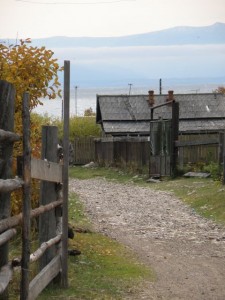 Bolshie Koty, the village where Bates students lived and studied for three weeks, is nestled in a small valley where one of the 365 streams flowing into Baikal cuts through mountains and forest.
Bolshie Koty, the village where Bates students lived and studied for three weeks, is nestled in a small valley where one of the 365 streams flowing into Baikal cuts through mountains and forest.
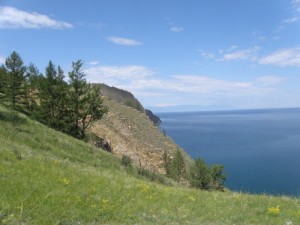 The Island of Olkhon is situated about half way up Baikal; the lake itself is almost 700 km. long, and near Olkhon is more than a mile deep.
The Island of Olkhon is situated about half way up Baikal; the lake itself is almost 700 km. long, and near Olkhon is more than a mile deep.
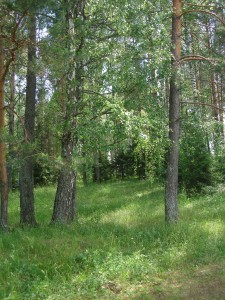
Professor Costlow’s research has included a trip to this legendary lake north of the Volga River. According to tradition, the lake hides beneath its waters the city of Kitezh – which was saved by divine intervention from raiders from the south. Both during the 19th century and through the Soviet era the lake was a pilgrimage site; today religious seekers and outdoor enthusiasts both find it a place of respite. Nearby the lake lies one of Russia’s closed conservation areas, or zapovedniki: unlike national parks, these are areas where tourists are not allowed – they are left completely alone, to provide benchmarks for scientists striving to understand ecological dynamics in sites with minimal human impact.
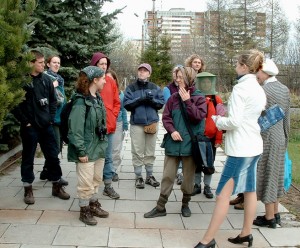 During Short Term 2003 Professor Costlow took students from the agricultural regions south of Moscow to the long-industrialized, mineral-rich Ural mountains, in a course that explored Environmental Issues in Cultural Context. In this image students visit a Botanical garden in Ekaterinburg, one of the many former Soviet industrial cities whose air quality is now vastly improved – largely because of the closure of mammoth factories.
During Short Term 2003 Professor Costlow took students from the agricultural regions south of Moscow to the long-industrialized, mineral-rich Ural mountains, in a course that explored Environmental Issues in Cultural Context. In this image students visit a Botanical garden in Ekaterinburg, one of the many former Soviet industrial cities whose air quality is now vastly improved – largely because of the closure of mammoth factories.
Much of Professor Costlow’s work has focused on St. Petersburg, a city that embodies many of the modernizing ambitions of the Russian Empire. Built in a river delta by Italian architects, the city is stunningly beautiful – and perennially vulnerable to severe flooding.

